Publications
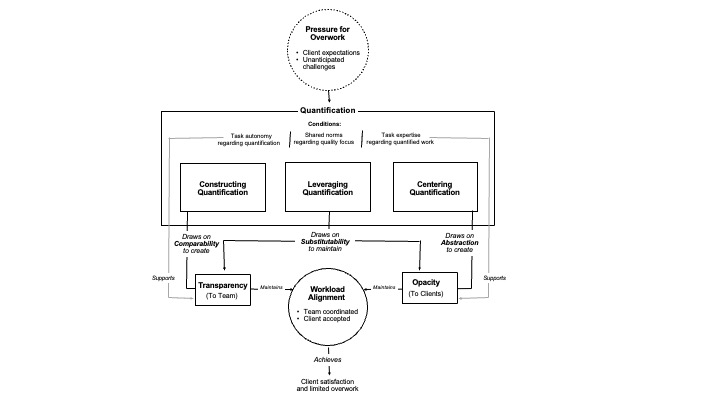
Concerted Quantification: How Knowledge Workers Limit Overwork While Maintaining Client Satisfaction
with Vanessa M. Conzon
Abstract
Knowledge workers are increasingly overworked, with negative consequences for both individuals and organizations. Pressures for long hours often come from clients, and the quantification of work has, in many cases, amplified these pressures. We examine when and how workers might rely upon quantification to limit overwork. We draw on data from a 21-month ethnography of information technology worker teams that develop software for clients in finance. We find that although these workers faced overwork pressures, they managed this tension through a process we label “concerted quantification.” This process has three steps. First, team members constructed quantified units based on disparate work tasks to coordinate on a specific set of tasks that would likely limit overwork. Second, workers leveraged these quantified units to create flexibility in when specific work tasks were performed, allowing workers to limit overwork when facing fluctuating work demands. Third, workers promoted quantified units to clients as a standard measure of performance, establishing the completion of these units as a key criterion for work success. Particular substantiations of common characteristics of knowledge work—team autonomy, task expertise, and shared quality norms—are conditions for concerted quantification. Overall, we find that quantifying processes (a) help teams determine an appropriate amount of work to take on without engaging in overwork and (b) set clients’ expectations for the amount of work to be completed. We contribute to research on overwork and quantification by highlighting how quantification can, under certain conditions, support workers in limiting overwork.
Under Review
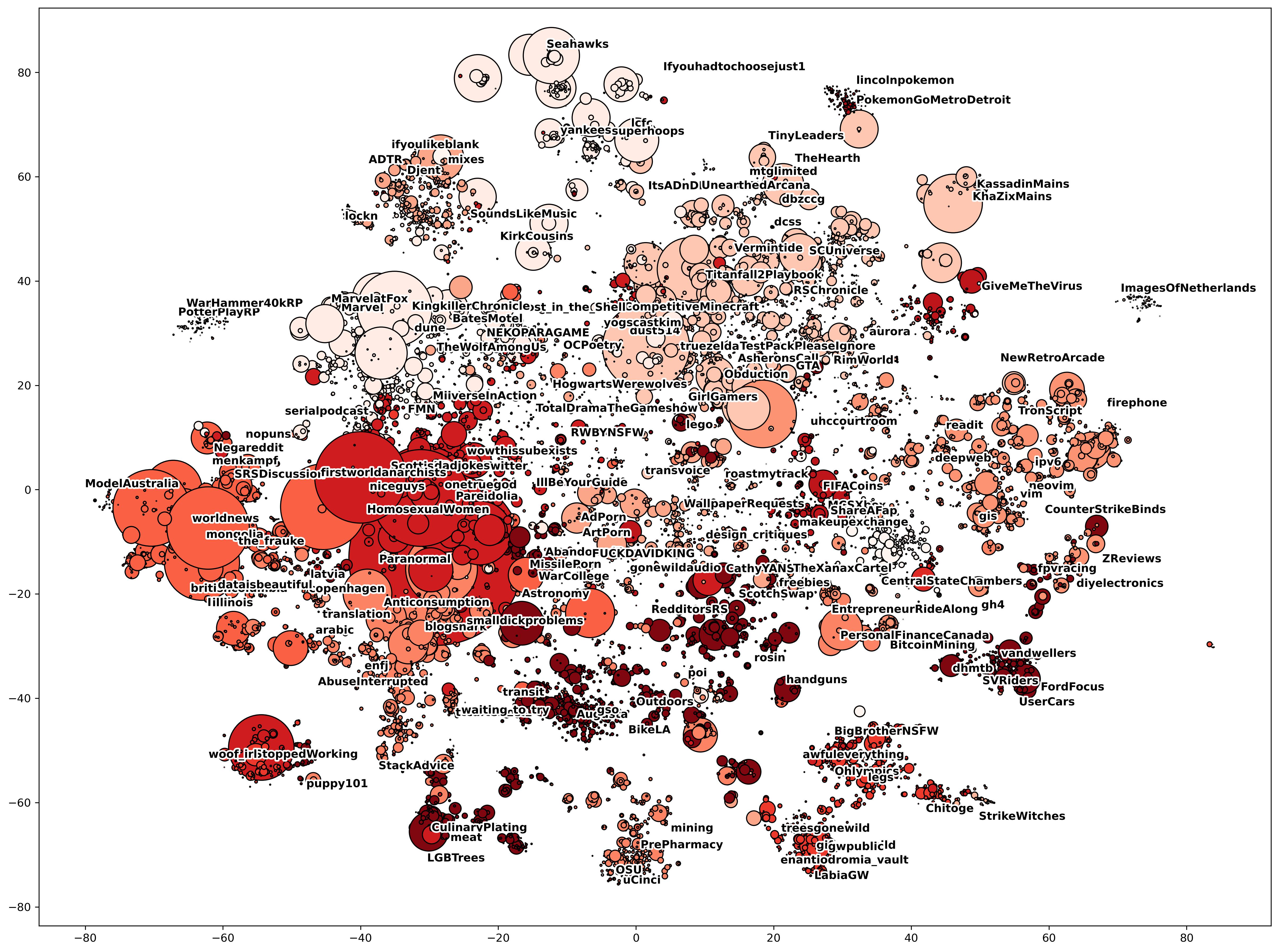
The Long Tale of the Long Tail: The Internet as Counterforce to Cultural Homogeneity
Abstract
The internet promised to facilitate cultural exploration, but research has found that attention allocation online resembles offline patterns in which generic communities targeting mass-market tastes attract the bulk of attention while a long tail of specialty communities targeting niche tastes remains under resourced. While past work examined how much attention different communities attracted, I instead examine the connections that form among different communities online as a function of lower structural constraints on exploration. Using data from Reddit, I independently measure the position of communities in a structural space based on membership, and a cultural space based on content. In contrast to many offline settings, I find that specialty communities online share members with even the largest, most generic communities—connections among culturally distinct communities that emerge from capturing the attention of the same users in different ways—cross-pollination that can increase exposure to niche tastes and fuel further cultural exploration.
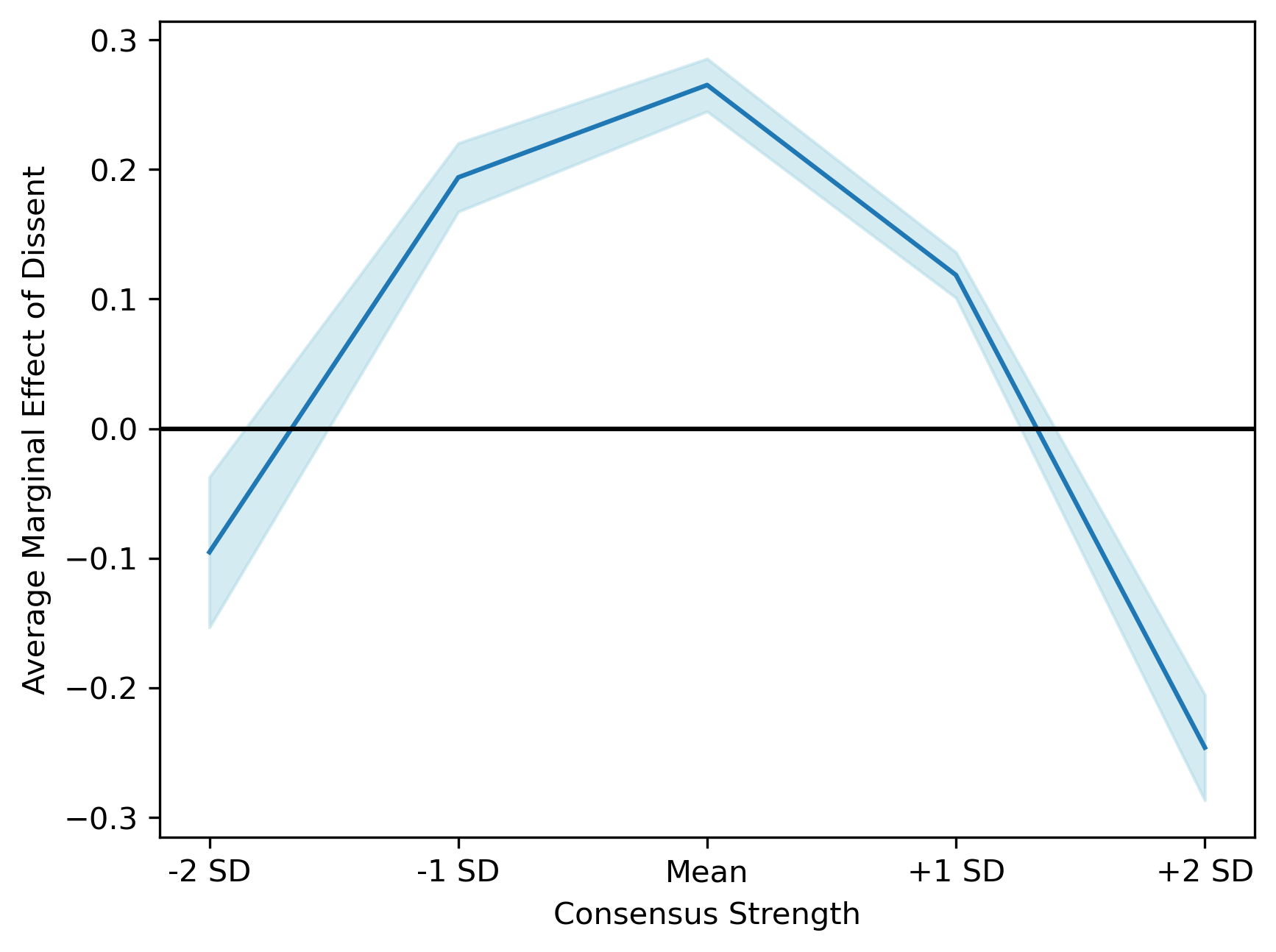
Whether Groups Value Agreement or Dissent Depends on the Strength of Consensus
Abstract
I investigate the conditions under which groups value agreement versus dissent in collective decision making processes. I argue that which kind of contribution a group values more will depend on the strength of the consensus. As a consensus evolves from weak to moderate to strong, I predict that groups will prefer agreement, dissent, and then agreement again. These predictions are in line with a multi-phase decision-making process in which groups pursue sequential goals reflected in the evolving consensus: establishing an initial consensus, exploring alternative perspectives, and settling on a final decision. I find support for these predictions using data from the Reddit community r/AmItheAsshole, in which people make normative judgments of social situations.
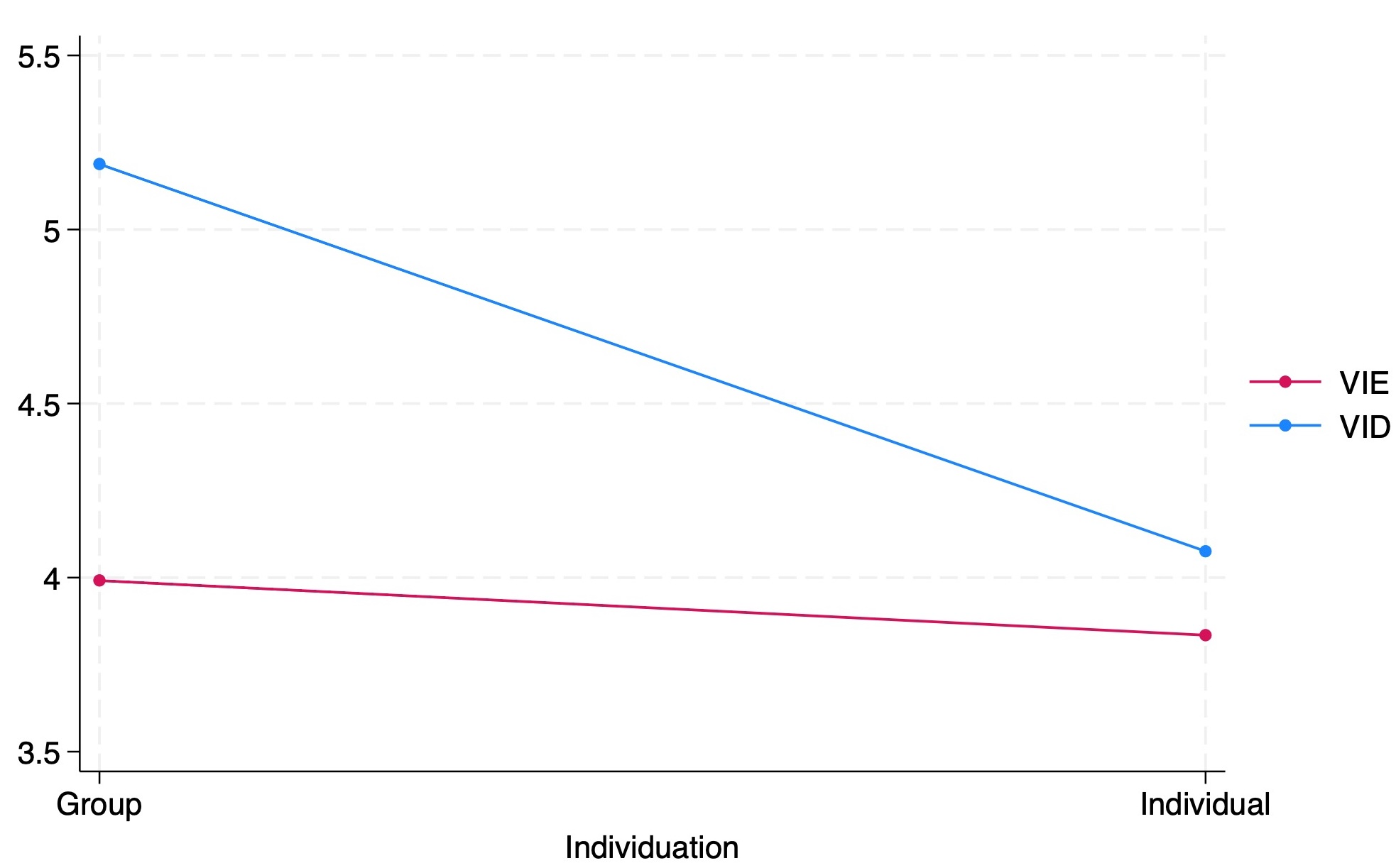
Beyond Representation: Extending the Effectiveness of Diversity Approaches via Individuation
with Ray Reagans
Abstract
This study investigates whether individuation can navigate a trade-off in fostering inclusive organizational climates for diverse demographic groups. Prior research indicates preferences for diversity climates vary by group representation: underrepresented groups often favor 'value in equality' (VIE) climates emphasizing fairness, whereas well-represented groups prefer 'value in diversity' (VID) climates celebrating unique contributions. These climates address distinct concerns related to membership and differentiation. However, because different groups are seldom equally represented, these preferences can lead to conflicts, where addressing one group’s priorities can alienate another. We propose individuation as a broader framework to address these dynamics. Specifically, when individuals focus on qualities making them distinct (i.e., over-individuation), membership concerns take precedence, whereas focusing on shared qualities (i.e., under-individuation) heightens differentiation concerns. Across three studies, we find partial support for this argument, particularly when accounting for baseline differences in individuation and diversity support. When individuals identify with a group, a VID climate enhances performance across demographic groups defined by gender and race. For those experiencing heightened individuation, a VIE climate yields mixed effects on performance. These results imply membership-related concerns are harder to address consistently, while differentiation-based concerns are more effectively mitigated, as VID climates improve performance among individuals heavily identified with a group. Promoting commonality while fostering a VID climate offers a promising strategy to enhance inclusion and belonging across diverse organizational contexts.
Works in Progress
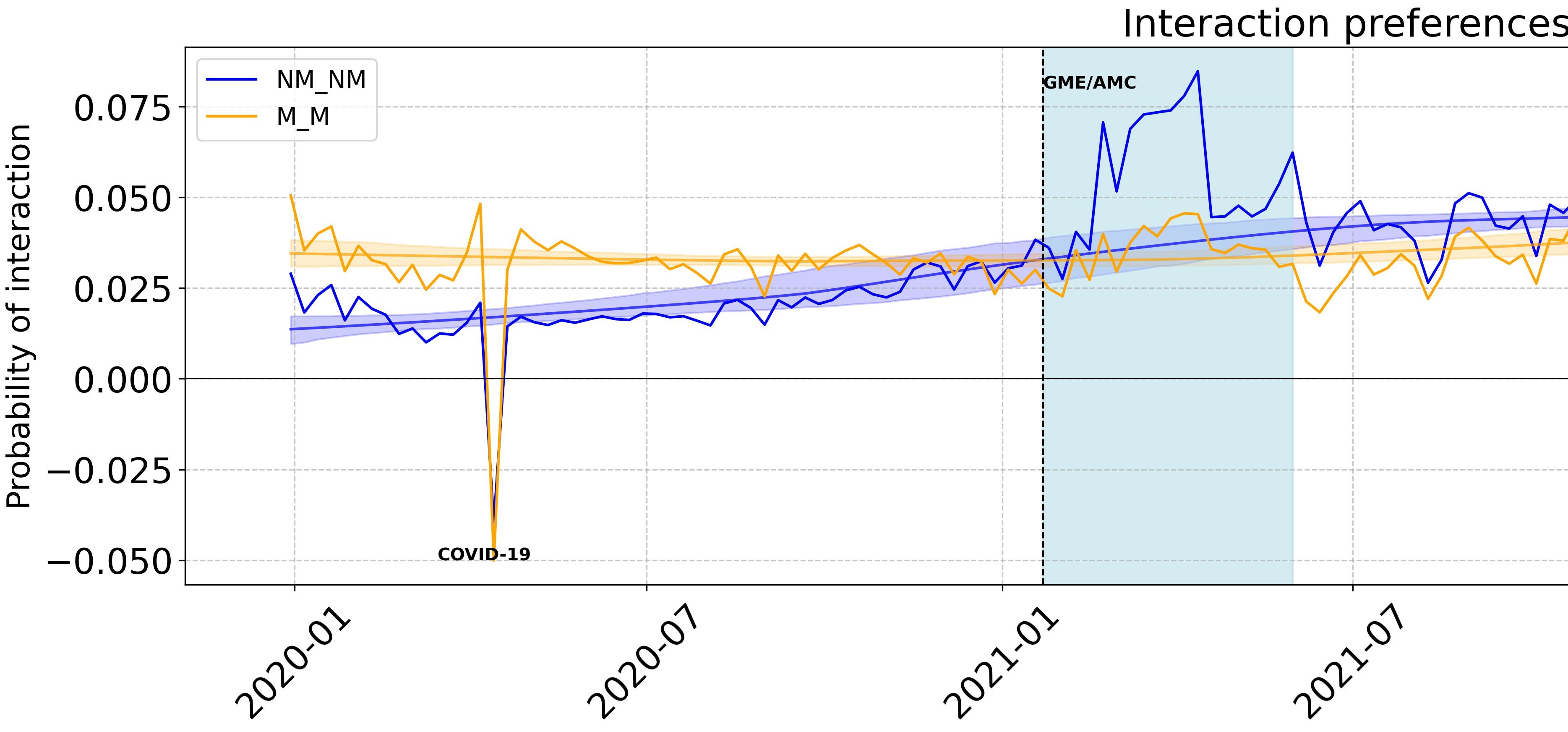
Cheap Talk: Coordinating and Fracturing Collective Action through Language
Abstract
Research on collective action highlights the importance of language in motivating participation and coordinating action. I argue that language which is effective at motivating and coordinating new joiners can also play a role in fracturing the collective. This is because the synthesis required to succinctly pitch a cause can overly simplify its core tenets. New joiners can quickly understand and easily signal their participation in a cause by engaging in this “cheap talk”—but their understanding and participation may be surface level, aligned with a particular element of the cause but critically misaligned with the broader culture of the existing group. I study this phenomenon in the context of the 2021 short squeeze of the GameStop stock. I leverage data from the Reddit community r/wallstreetbets, where the short squeeze was largely coordinated. I find that the usage of meme language increased leading up to the short squeeze, and that new joiners adopted this language more quickly and with more intensity than pre-existing users. While this talk facilitated an increase in membership and coordination around the time of the short squeeze, it became a source of contention in the months and years after the squeeze, transforming into a cultural fault line distinguishing hype-driven “meme” investors from pre-existing community members.

Remote Consensus is an Oxymoron: Lessons Learned from Pandemic-Era Scientists’ Deliberation Practices
with Janet Vertesi
Abstract
In this project, we investigate how remote and hybrid collaboration environments shape consensus-building in scientific communities. Focusing on the decadal planning processes of three NASA science teams during or immediately following the COVID-19 pandemic, we combine ethnographic methods with computational analysis of planning documents to characterize how remote collaboration impacts group decision-making. Through interviews and observational data, we identify three structural tensions—a paradox of voice, a paradox of constraint, and a paradox of transparency—that illustrate a central trade-off: remote collaboration expands participation and cognitive diversity but introduces friction in prioritization and convergence. To assess downstream impacts of these dynamics, we analyze the textual outputs of the decadal processes using natural language processing techniques, examining shifts in emphasis, dissent, and alignment over time. Our findings offer insight into the design of effective decision-making frameworks in distributed scientific collaborations.